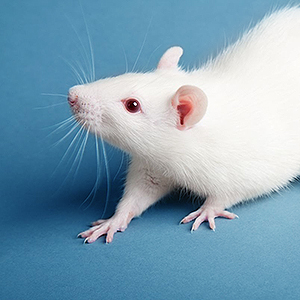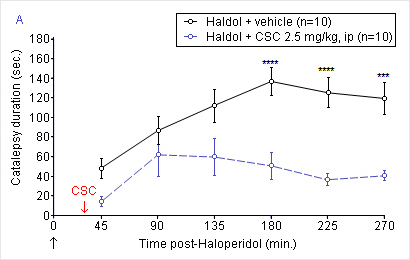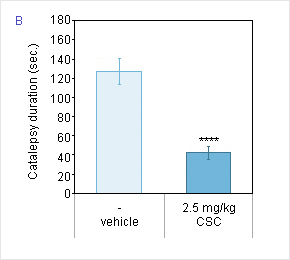Newsletter # 16

Animal models
Parkinson’s Disease (PD) is a neurodegenerative disorder featured by the loss of dopaminergic neurons of the substantia nigra. The primary motor symptoms of patients with PD are muscular rigidity, akinesia-bradykinesia and resting tremor.
In rodents, neuroleptic drugs such as haloperidol induce catalepsy characterized by muscular rigidity and behavioral immobility. Haloperidol-induced catalepsy in rodents has long been used as an experimental model of PD.
-
The degree of inhibition / reversion of haloperidol-induced catalepsy is used to measure the potential effect of new drugs on akinesic symptoms of PD.
-

Graph A :
Time course of Haloperidol-induced catalepsy in the mouse.
Treatment with CSC markedly reduces haloperidol-induced catalepsy. -

Graph B :
Reduction of haloperidol-induced catalepsy by CSC during the stable phase (180-270 min.).
-
We look forward to hearing from you.
Get in touch


 PREVIOUS
PREVIOUS